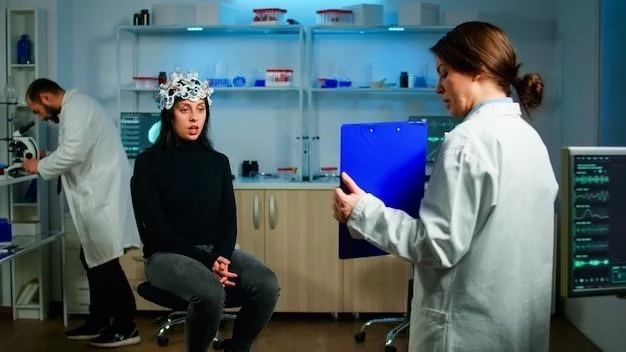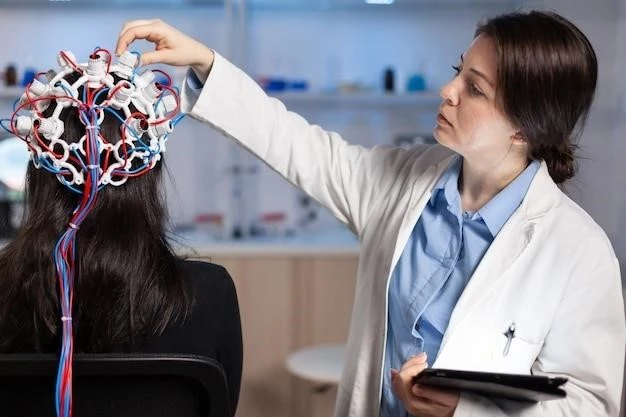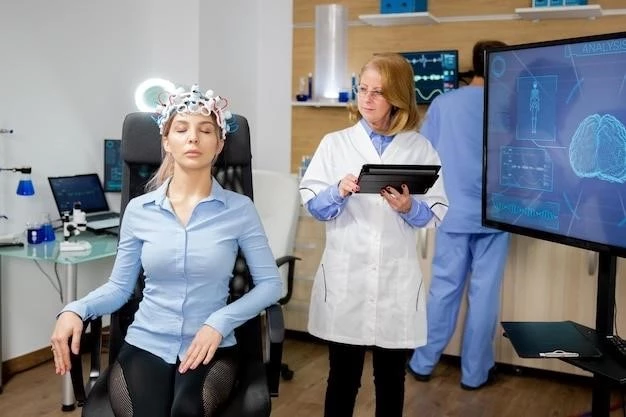Introduction to Neuromyotonia
The introduction to Neuromyotonia explains that it is a rare condition of continuous muscle fiber activity of peripheral nerve origin, often associated with antibodies to voltage-gated potassium channels.
Neuromyotonia, also known as Isaacs syndrome, is a rare condition characterized by continuous muscle fiber activity originating from peripheral nerves. This condition is often associated with autoimmune peripheral nerve hyperexcitability and is linked to voltage-gated potassium channel dysfunction.
Causes and Mechanisms
Neuromyotonia is a rare condition associated with autoimmune peripheral nerve hyperexcitability, often linked to dysfunction in voltage-gated potassium channels.
Autoimmune Peripheral Nerve Hyperexcitability
Neuromyotonia is a rare autoimmune disorder characterized by continuous muscle fiber activity stemming from peripheral nerves. This condition is often related to dysfunction in voltage-gated potassium channels, potentially leading to persistent muscle contractions and nerve hyperexcitability.
Definition and Overview
Neuromyotonia, also known as Isaacs syndrome, is a rare autoimmune condition characterized by continuous and spontaneous muscle fiber activity originating from the peripheral nerves. This disorder is often linked to dysfunction in voltage-gated potassium channels.
Muscle Stiffness and Cramps
Neuromyotonia, or Isaacs syndrome, presents clinically with muscle stiffness, cramps, myokymia (visible muscle twitching), pseudomyotonia (slow muscle relaxation), and weakness, predominantly affecting the limbs and trunk. Excessive sweating is a common accompanying symptom of this condition.
Relationship to Voltage-Gated Potassium Channels
Neuromyotonia is closely associated with dysfunction in voltage-gated potassium channels, potentially leading to continuous muscle fiber activity rooted in peripheral nerves.
Association with Antibodies to Voltage-Gated Potassium Channels
Neuromyotonia is often associated with antibodies targeting voltage-gated potassium channels. These antibodies are believed to play a crucial role in the pathophysiology of the condition, contributing to the continuous muscle fiber activity observed in patients with this rare disorder.
Diagnosis of Neuromyotonia
Diagnosing Neuromyotonia involves evaluating symptoms like muscle stiffness, cramps, myokymia, and pseudomyotonia, along with considering potential antibodies targeting voltage-gated potassium channels.
Electromyographic and Clinical Diagnostic Criteria
Diagnosing Neuromyotonia involves electromyographic studies to assess muscle activity and clinical evaluation of symptoms like muscle stiffness, cramps, myokymia, and pseudomyotonia. Specifically, identifying antibodies targeting voltage-gated potassium channels is crucial in confirming the diagnosis.
Neuromyotonia as a Phenotype of Peripheral Nerve Hyperexcitability
Neuromyotonia is considered a severe phenotype of peripheral nerve hyperexcitability, often associated with antibodies targeting voltage-gated potassium channels.
Comparison with Other Peripheral Nerve Hyperexcitability Disorders
Neuromyotonia, a severe form of peripheral nerve hyperexcitability, shares similarities with other related disorders such as myokymia, cramp-fasciculation syndrome, and Morvan syndrome. These conditions manifest as muscle stiffness, twitching, and impaired relaxation due to nerve hyperexcitability.
Acquired Neuromyotonia
Acquired Neuromyotonia is an inflammatory disorder that leads to continuous muscle fiber activity due to abnormal nerve impulses in the peripheral nerves. Treatment focuses on managing symptoms and addressing the underlying inflammatory cause.
Inflammatory Disorder Causing Abnormal Nerve Impulses
Acquired Neuromyotonia is an inflammatory disorder affecting peripheral nerves, leading to abnormal nerve impulses that result in continuous muscle fiber activity. This condition requires a comprehensive approach to manage symptoms and address the underlying inflammatory processes.

Neuromyotonia Treatment Options
Neuromyotonia treatment involves a multidisciplinary approach utilizing medications, physical therapy, and surgical interventions to manage symptoms and address the underlying causes of abnormal nerve impulses and muscle activity.
Medications, Physical Therapy, and Surgery
Treatment for neuromyotonia includes a combination of medications to manage symptoms, physical therapy to improve muscle function and mobility, and in severe cases, surgical interventions to alleviate persistent muscle activity and abnormal nerve impulses.
Ocular Neuromyotonia
Ocular Neuromyotonia refers to a rare ocular motor disorder characterized by intermittent tonic spasms of extraocular muscles, leading to strabismus and paroxysmal diplopia due to neural discharges causing delayed muscle relaxation.
Characterization and Symptoms of ONM
Ocular Neuromyotonia presents as a rare ocular motor disorder with intermittent tonic spasms of extraocular muscles, leading to strabismus and paroxysmal diplopia due to impaired muscle relaxation from neural discharges.
Genetic Inheritance Patterns in Neuromyotonia
Neuromyotonia can be inherited in an autosomal recessive pattern, impacting family members with the condition due to specific gene changes associated with continuous muscle activity and stiffness.
Autosomal Recessive Inheritance
In the case of Neuromyotonia, autosomal recessive inheritance plays a significant role, indicating that specific gene changes inherited from both parents contribute to the manifestation of continuous muscle activity and stiffness seen in affected individuals.
Neuromyotonia Research and Clinical Trials
Research on Neuromyotonia focuses on understanding the underlying mechanisms of continuous muscle activity, advancements in treatment options, and potential clinical trials to improve patient outcomes and quality of life. Stay updated on current studies and developments in this field.
Current Studies and Advancements
Ongoing research on Neuromyotonia focuses on understanding the mechanisms behind continuous muscle activity, exploring new treatment modalities, and conducting clinical trials to enhance management strategies and improve patient outcomes. Stay informed about the latest advancements in the field.
Complications and Prognosis of Neuromyotonia
Neuromyotonia can lead to significant complications impacting an individual’s daily life, including muscle stiffness, cramps, fatigue, and weakness. Understanding the long-term outlook and managing the associated challenges are crucial for improving the quality of life for individuals with this condition.
Impact on Daily Life and Long-Term Outlook
Neuromyotonia can significantly impact daily life due to muscle stiffness, cramps, myokymia, and pseudomyotonia. Understanding and managing these symptoms are crucial for the long-term outlook and overall quality of life for individuals living with this rare condition.

Conclusion
In conclusion, Neuromyotonia is a rare condition characterized by continuous muscle activity, often associated with autoimmune or genetic factors. Understanding the underlying mechanisms, diagnosing accurately, and exploring treatment options are crucial in managing this condition effectively and improving patients’ quality of life.
Summary of Neuromyotonia and Future Directions for Research
Based on the most recent information available online, Neuromyotonia is a rare condition characterized by continuous muscle activity originating from peripheral nerves. Patients with Neuromyotonia can experience muscle stiffness, cramps, myokymia, and pseudomyotonia. This disorder is often associated with autoimmune peripheral nerve hyperexcitability and antibodies targeting voltage-gated potassium channels. The diagnosis of Neuromyotonia involves electromyographic studies and clinical evaluation of symptoms to confirm the presence of continuous muscle fiber activity. Treatment options include medications, physical therapy, and surgery to manage symptoms effectively. Research on Neuromyotonia focuses on understanding the underlying mechanisms and exploring new treatment modalities through clinical trials. Managing Neuromyotonia is crucial for improving the quality of life of affected individuals.
